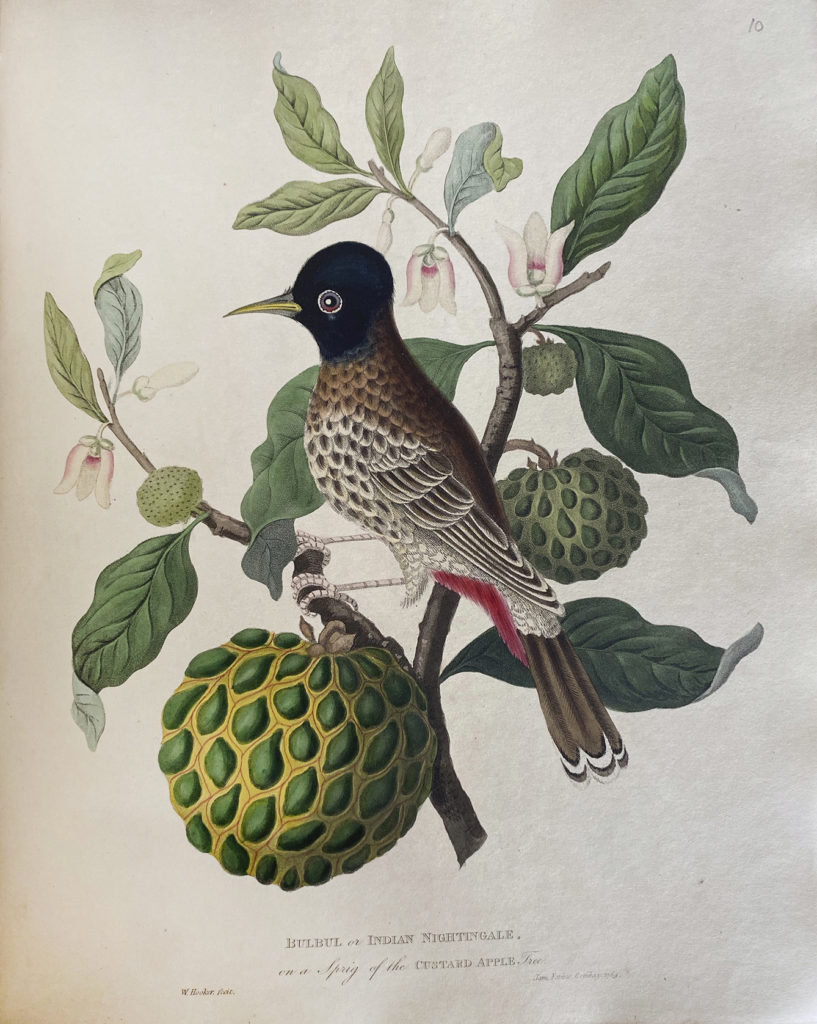
‘Bulbul on a sprig of the Custard Apple Tree’ from the rare book ‘Oriental Memoirs’ by James Forbes
In India, you don’t have to dig deep before you strike gold—our riches are scattered right there in the soil. When the Portuguese set sail for the East in the 15th Century, and the Dutch, the French and the British followed, they were trailing the scent of our spices: black pepper, cardamom, opium. The first wave of European immigrants included sailors, emissaries, traders, and the armed forces, people who could grab the land; the next wave included doctors, cartographers, botanists, and naturalists, people who could study it. They researched Indian plants in the hope of finding new medicines and new sources of revenue, and created or commissioned thousands of drawings in the process. So, in the heart of colonialism, as a branch of its economic activities, botanical art struck roots and flourished. India’s roots, leaves, and flowers became India’s top models and global ambassadors.
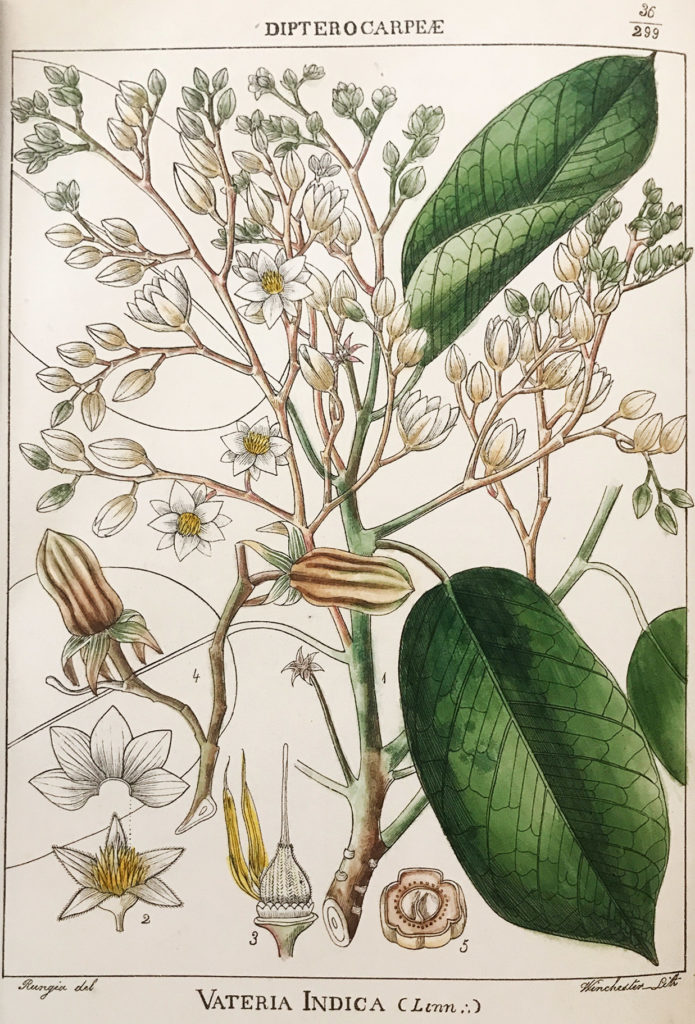
Vateria Indica or white damar is native to the Subcontinent, used in Ayurvedic medicine and critically endangered today thanks to habitat loss. Illustration by Rangaiah from the rare book ‘Indian Botany’ by Robert Wight
The Portuguese had the first-mover advantage. Cell biologist Annamma Spudich, who curated the 2008 exhibition Such Treasure and Rich Merchandize: Indian Botanical Knowledge in 16th and 17th Century European Books in Bengaluru, traced the beginning of botanical art in her catalogue. By the time Vasco da Gama docked in Calicut in 1498, Ayurvedic and Unani physicians, and the occasional fakir, had amassed considerable knowledge on the temperament of tropical plants. From an oral tradition, they shifted to writing things down on palm leaves, using an iron stylus fuelled with ink made from lamp black or charcoal mixed with oil. In 1568, a naturalist-physician, who was listening intently to the vaidyas and hakims of Goa, decided to print them.
A Prescription Of Petals
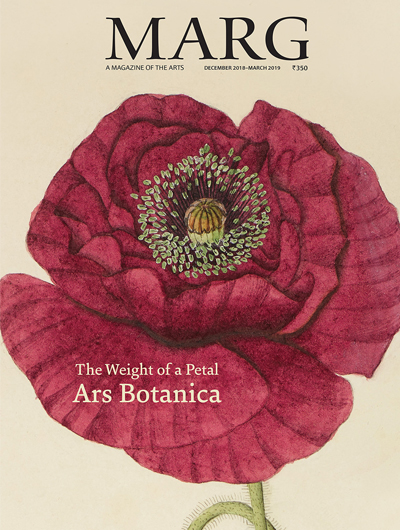
Marg special issue ‘The Weight of a Petal: Ars Botanica’ (2018-19)
Garcia da Orta was the doctor-on-call of the viceroys of Goa for nearly three decades. His book, Coloquios dos simples e drogas da India, is the first paperback on the subject and contained information on 57 Indian medicines and edibles. Guest editor of Marg’s special issue, The Weight of a Petal: Ars Botanica (2018-19), Sita Reddy, says Coloquios “painted pictures of Indian flora in words if not images. Coloquios is a catalogue of medicinal plants in their native habitat. And, while [it] is not illustrated, all subsequent translations added woodcuts of recognisable Indian species: banyan, black pepper, the ubiquitous coconut. This tradition of colonial herbals continued with the Dutch, French, and Danish East India Companies.”
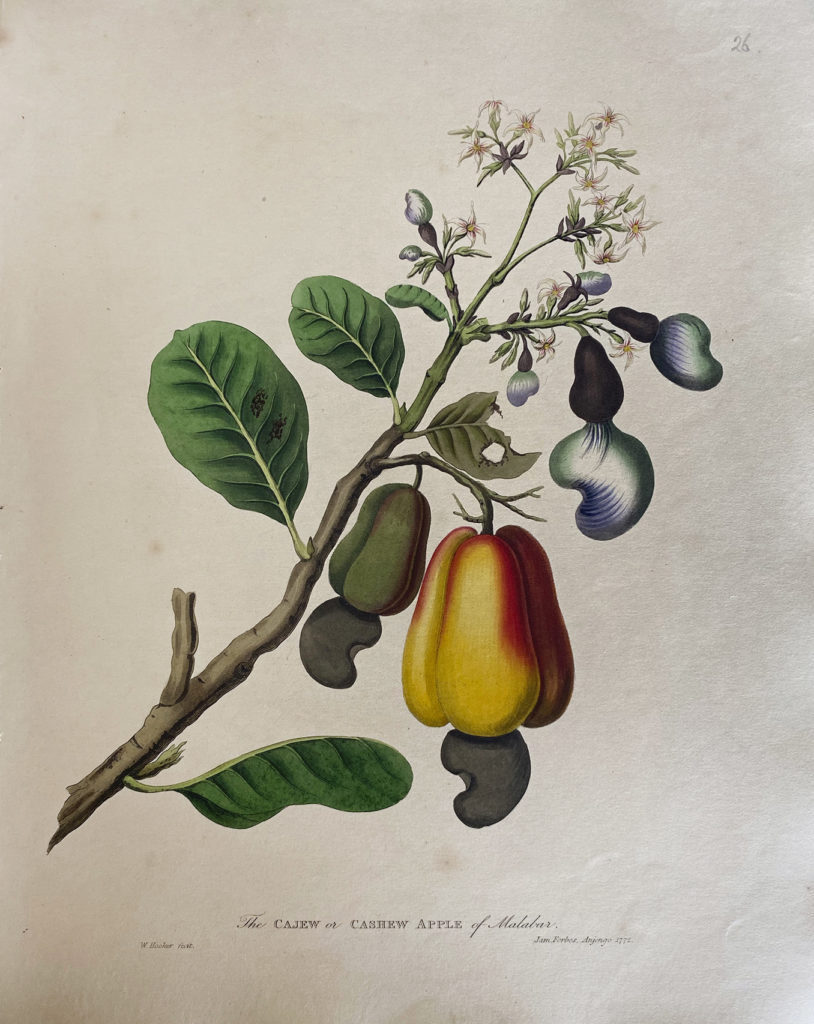
‘The Cajew or Cashew Tree of Malabar’ from the rare book ‘Oriental Memoirs’ by James Forbes
In 1578, his successor of sorts, Cristobal Acosta, built off Garcia da Orta’s research in Tractado de las drogas y medicinas de las Indias Orientales (Spanish) which contained 17 new species and 47 illustrations. But, it was Hortus Indicus Malabaricus (1678), a 12-volume treatise in Latin commissioned by the Dutch governor of Malabar, Hendrik van Rheede, that became the bible, with copperplate engravings of nearly 740 plants. “In this work, Indian scholars are specifically identified and honoured for their contributions,” notes Spudich. It was an Ayurveda practitioner Itty Achudan and scholars Ranga Bhatt, Apu Bhatt and Vinayak Pandit, who distilled centuries of inherited wisdom into a few hardcovers.
Birth of the British Botanicals
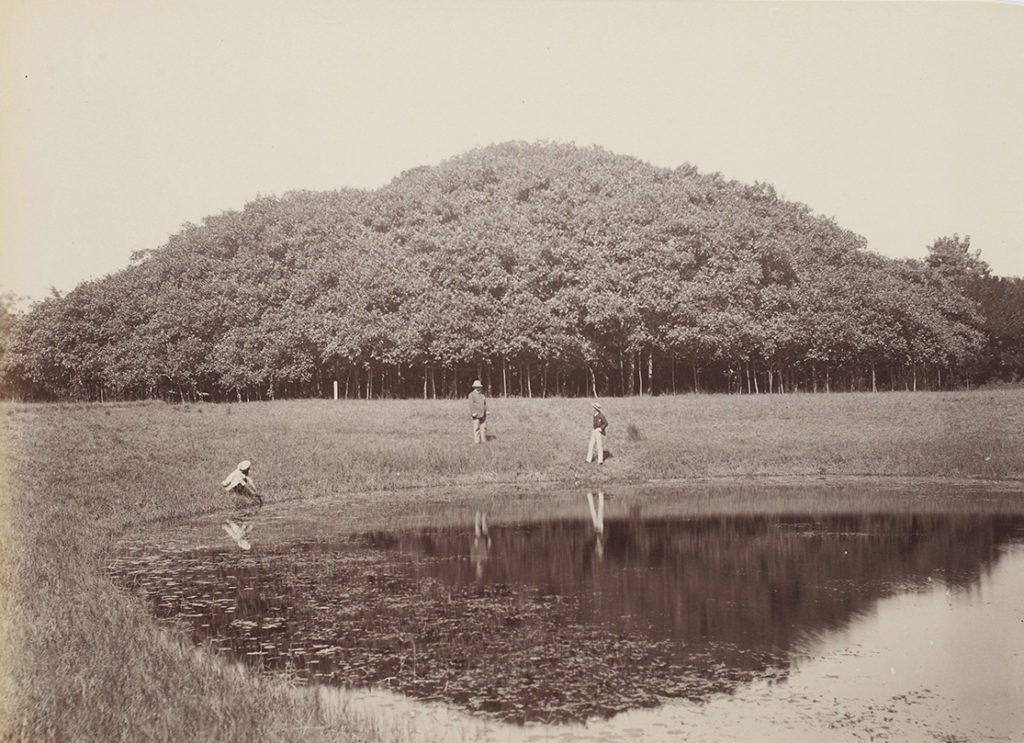
Botanical Garden, Calcutta, c.1880-1920, by an unidentified photographer
When the sun rose on the British East India Company (EIC), the atmosphere was just right for botanical art to blossom. Company officials loved record-keeping and they loved long walks in the park. From the 18th century onwards, they began to appoint naturalists and plan extensive botanical gardens. Botanist and scientist Joseph Banks, who had been consulted for the Calcutta Botanic Garden, wrote in the 1780s, “A colony such as this, blessed with the advantages of soil, climate, population so eminently above its mother country, seems by nature intended for the purpose of supplying her fabrics with raw materials.”1 By the 1790s, the garden had 4,000 plants, with a “mulberry tree more loaded with fruit than anything in… dear, dear England.” 1 And, British artist and writer James Forbes had written in 1834, “I had seldom occasion to look out for gardens or pleasure grounds to pitch my shamiana, the whole country being generally a garden.” 2
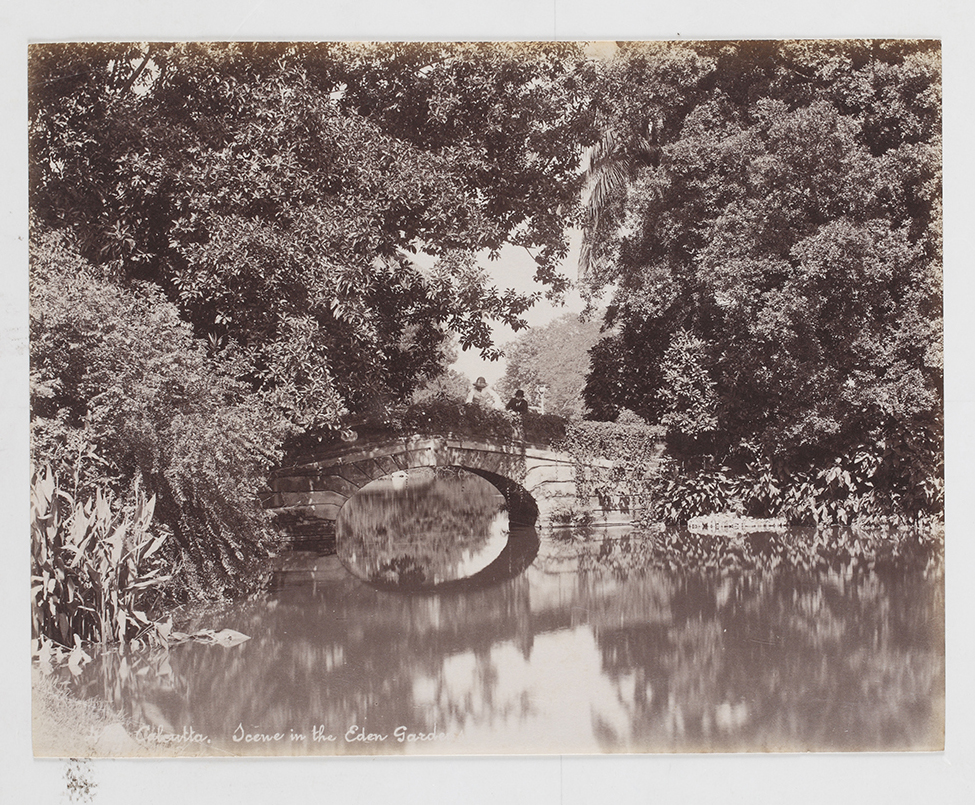
Eden Gardens, Calcutta, c1880-1900, by an unidentified photographer
This was also the time when Indian emperors and rajas were being forced into early retirement, and miniature painters from Mughal and Rajput courts, and artists from the Vijayanagara empire, skilled in devotional paintings, were looking for work (even if the monthly take-home was sometimes as low as Rs 20). Fortunately, a few of them had some experience in limning the natural world.
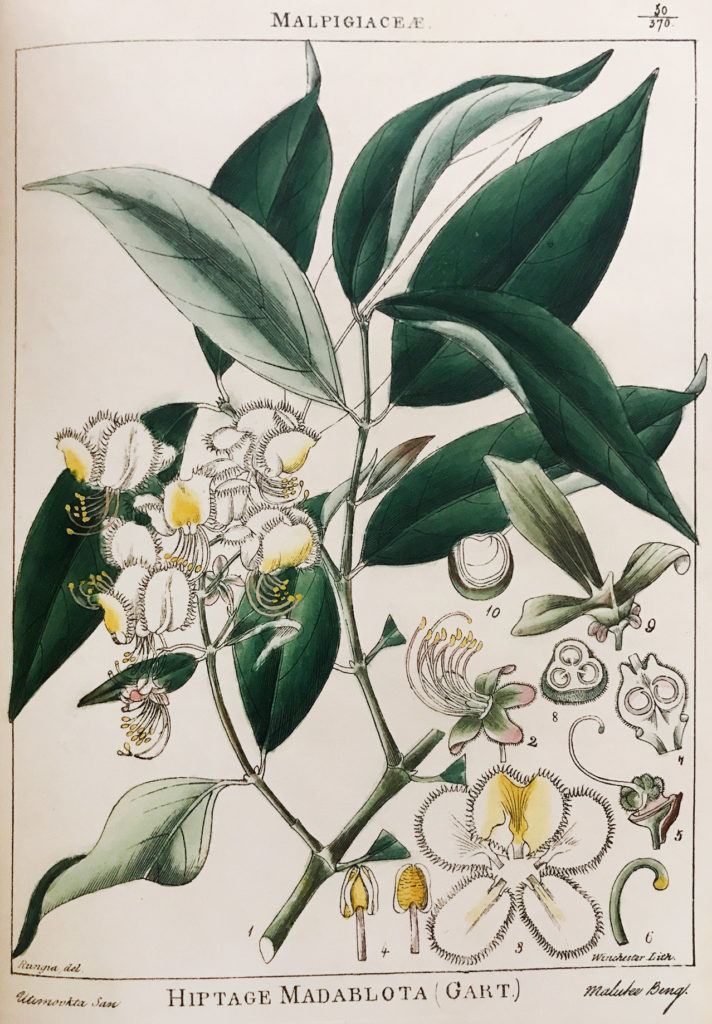
Hiptage Madablota aka madhavi lata, madhabi and vasanta malligai. Attributed to ‘Rungia’ in the rare book ‘Indian Botany’ by Robert Wright
Reddy says, “One of the highlights of Mughal miniature painting traditions are the exquisitely rendered ‘flower studies’, a genre that bloomed in Jehangir’s time and peaked during Shah Jahan’s. There were ateliers and artists who were able to capture not just the physical or material reality of the flower, but also its feeling, its very spirit or essence. A viewer could be wonderstruck by naturalistic details rendered with emotion: pollen dust on pistils, the buzz of the bee hovering over the flower, the curl of the wilting leaf as the day lengthened, and so on.”
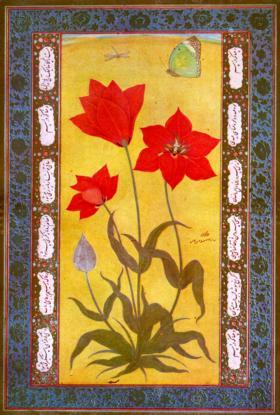
Tulip from Kashmir (c. 1610) by Mansur Naqqash. Image courtesy Wikipedia Creative Commons
This group also possibly included traditional artists such as kalamkari practitioners, as Indian textile painters were in great demand for the colonial herbals. Henry Noltie, former research associate at Royal Botanic Garden Edinburgh, writes that “naturalists could find painters wherever they were in India.”3
Indian Artists & Imperial Ambitions
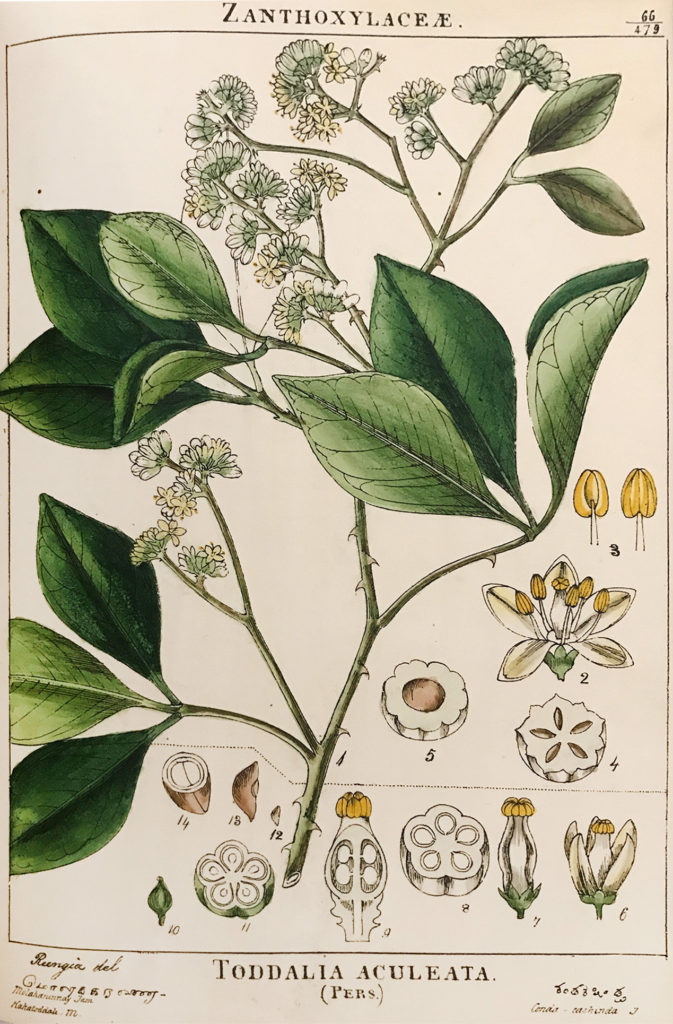
Toddalia aculeata aka orange climber or junglee kalimirch, attributed to Rungia in ‘Indian Botany’ by Robert Wight
British patronage changed Indian art-making. It merged the painting traditions of the East with the naturalism of the West, a style known as Kampani kalam today. Reddy says, “Practices that emerged or continued from miniature painting traditions included a rich and varied palette derived from natural pigments such as lapis, malachite, and mica, or natural dyes such as indigo and aal; dry brush techniques and squirrel’s hair brushes that layered paint in tiny strokes for textural detail; a technique of burnishing the painting surface at every stage of colouring or line work with, for example, agate stone, so that the pigment could bond with the paper, and the entire painting could take on a jewel-like lustre.” Miniature painting artists also had to switch from gouache to watercolours, as the former “lacked the nuances possible with European watercolours, and discouraged an emphasis on line, essential for the accurate representation of flowers.”1
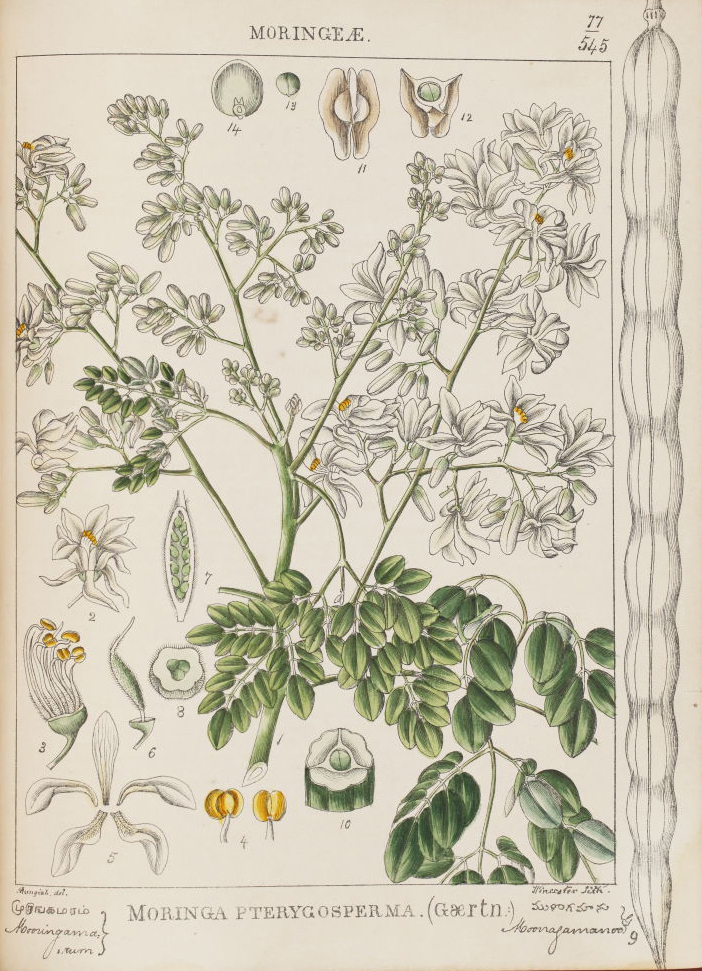
Moringa or drumstick tree from ‘Indian Botany’ by Robert Wight
The process was detailed as, “Once the outlines had been determined, the artist painted the bodies of the stems, tendrils, leaves, and petals. Next, the lines of the leaf veins, flower profiles, and dissected details were superimposed using densely mixed watercolour applied with very fine brushes. Then texture was portrayed, often by stippling. The drawings were then heightened with gum arabic to increase the gloss of the surfaces and create an illusion of depth.” 1
The first British man of science to have commissioned botanical art from Indian artists was surgeon and botanist William Roxburgh (1751-1815), considered the father of Indian botany. In portraits, Roxburgh is presented as a man with a silvery bob cut, Martin Scorsese eyebrows, a hook nose and a gentle mouth, typically dressed in a high-collared jacket and a ruffled cravat. Roxburgh lived a studious life, whether it was at the Edinburgh University, or his two important postings in India: Samalkot and Calcutta Botanic Garden, where he consigned a total of 2,542 botanical studies.
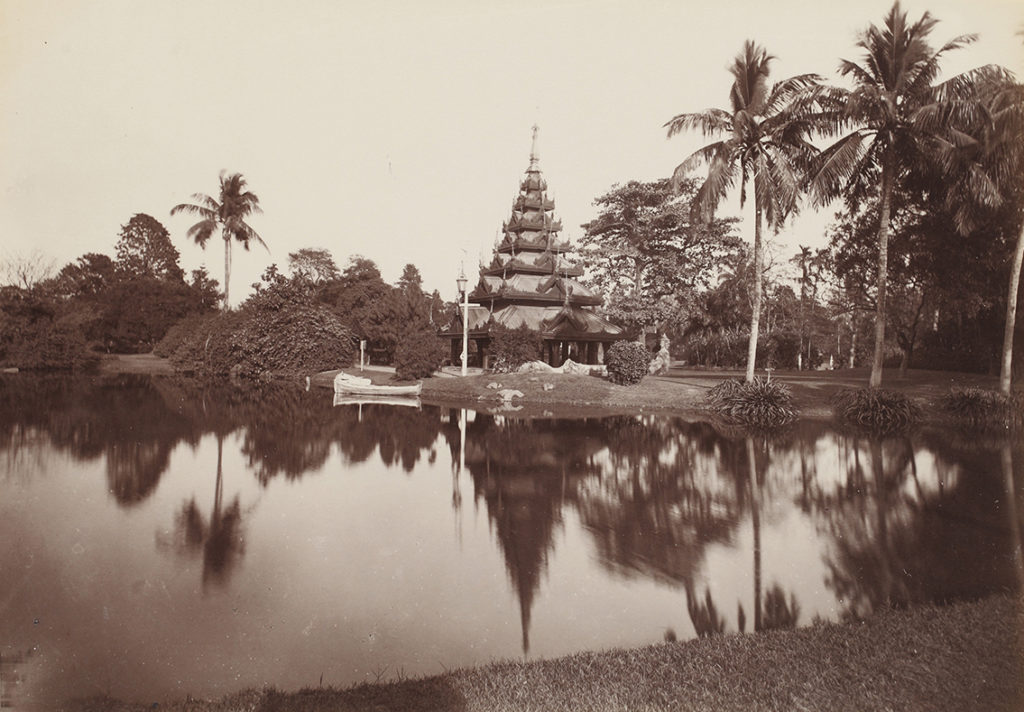
Buddhist Pagoda, Eden Gardens, Calcutta, c.1880-1920, by an unidentified photographer
Reddy says, “Three hundred of these — known collectively as the Roxburgh Icones — were published in the lavish double elephant folio Plants of the Coast of Coromandel [1795], whose beautiful hand-coloured engravings offered a new benchmark for the artistic depiction of botanical flora. It isn’t clear how many artists Roxburgh employed during his 20-year tenure at Calcutta, but two of the finest helped document the astonishing increase in the garden’s species from 300 to 3,500. Over the years, a few artist names were recorded: Vishnu Persaud, Gorachand, and Lakshman Singh, and then through [Henry] Noltie’s] work, Rungiah, Govindoo, Haludar, and so on.” It is widely believed that, “Coromandel set a precedent for all subsequent botanical illustrations done under the aegis of East India Company.”1 And, Francis Buchanan-Hamilton, his successor at Calcutta, has been quoted in The East India Company and the Natural World (2015) as having said, “There is no article of trade connected with the vegetable kingdom that Dr Roxburgh has left unnoticed or unimproved.”
Science & The Portraits of Plants
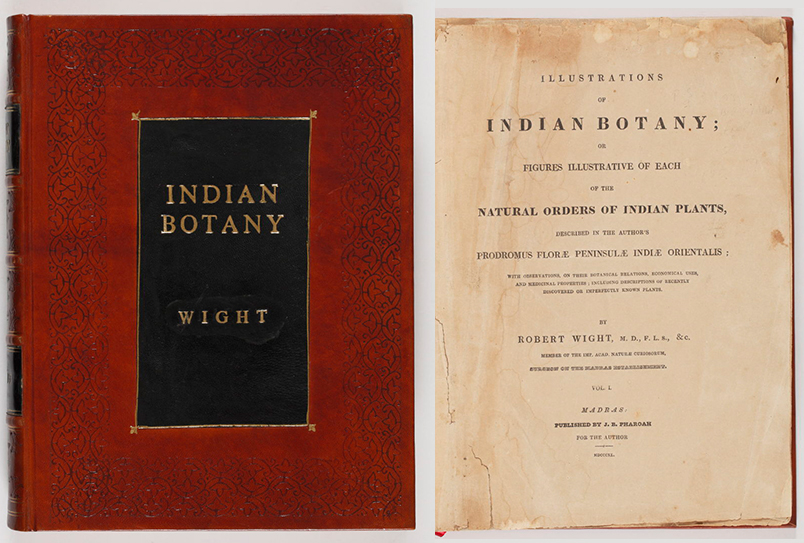
Close on his heels was surgeon-botanist Robert Wight (1796-1872), who arrived in Madras in 1819 and was the last official holder of the Madras Naturalist’s post, where he earned £1,500 a year. As a 36-year- old, a lithograph reveals, he had impressive sideburns, side-swept hair, a bulbous nose, a heart-shaped mouth, and furrowed eyebrows, as if he was always reading something closely. His agenda, Reddy says, “was to chart the botanical wealth of south India,” his hunting ground for 34 years. Eventually, Wight published Illustrations of Indian Botany (1834) and Icones (1844), in which he introduced lithographs into Indian botanical art.
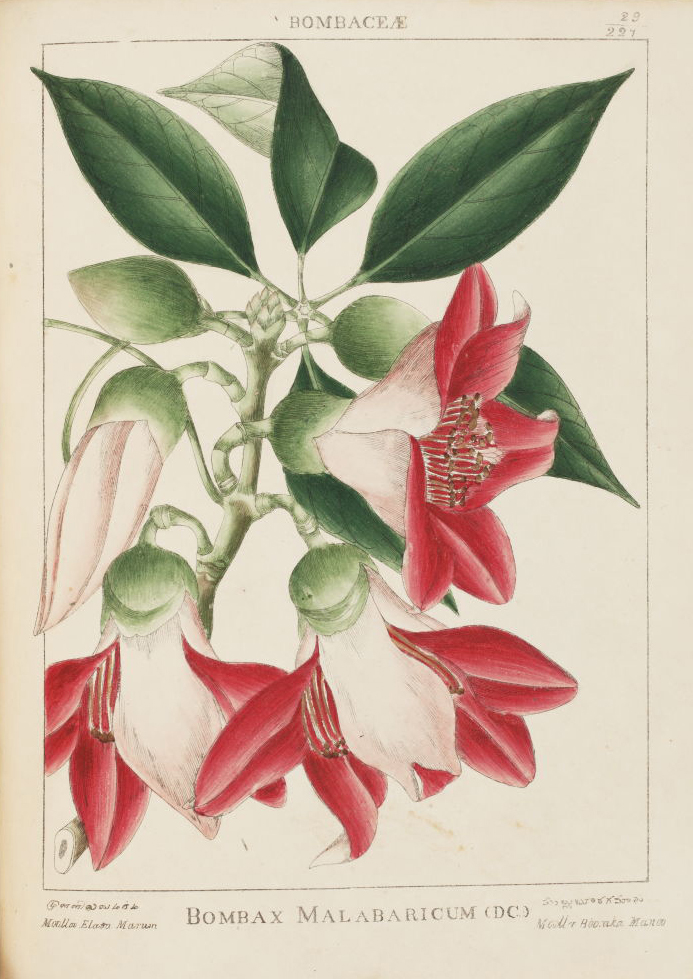
Bombax Malabaricum aka Semal/Shalmali/Silk Cotton Tree from ‘Indian Botany’ by Robert Wight
In Illustrations of Indian Botany, plants are categorised under affinities, essential character, geographical distribution, properties and uses, with remarks on the genera and species. Not exactly a page-turner, the text is enlivened by the illustrations by the two known Indian artists, Rungiah and Govindoo. It isn’t for nothing that Wight dedicated “the orchid genus Govindooia to his second artist.”3 And, Reddy says, “These Indian artists are the true unsung heroes of Company botanical art, the true foot soldiers of the genre.” The first pop of colour appears on folio 25 with Nymphaea rubra, the pink water lily, and the centrespread is devoted to Chukrasia tabularis, the Indian mahogany. The most amount of space is given to Malvaceae, or cotton, and the ways in which Indian cotton, known as “Surats”, could be cultivated to beat American cotton. On Wight’s watch, botany pursued scientific, commercial, and aesthetic goals simultaneously.
In The Service of Pleasure
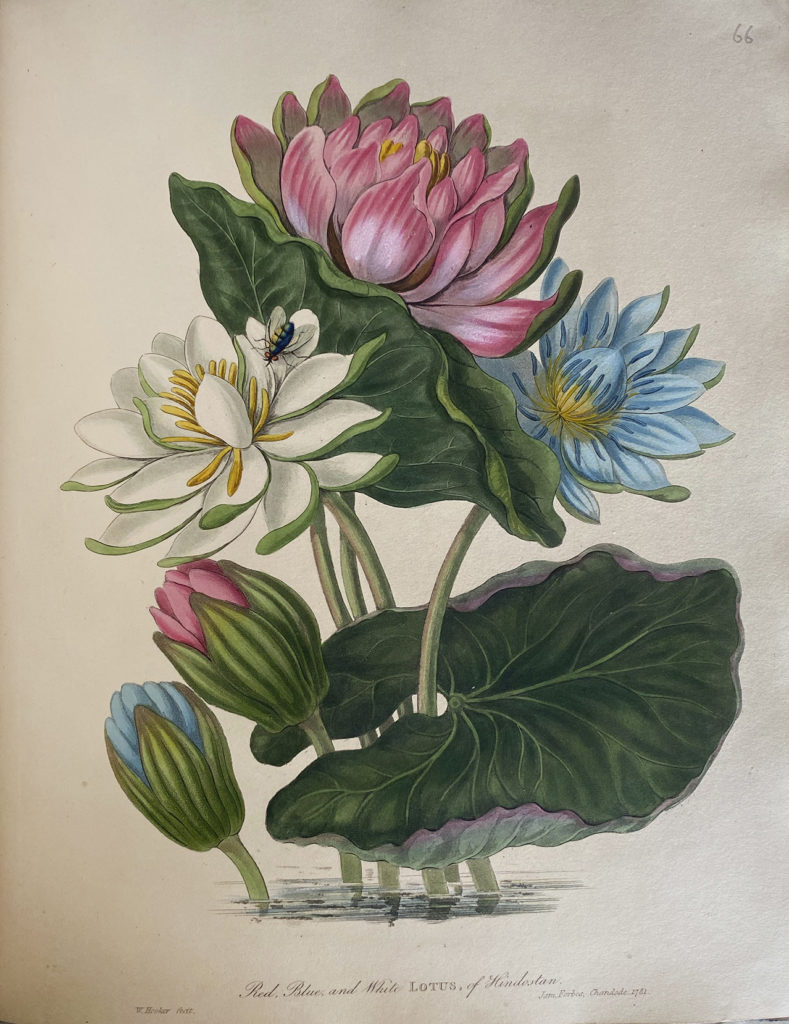
‘Red, Blue and White Lotus of Hindostan’ from ‘Oriental Memoirs’ by James Forbes
While there were several other important EIC collections created at the time, including commissioners who paid for the drawings out of their own pockets, and surgeon Hugh Cleghorn (1820-1895), who had “an artist paint a different plant each day,”3 a unique project was James Forbes’s Oriental Memoirs (1813). Forbes arrived in Bombay as a 16-year-old in February 1766 and departed 17 years later, after occupying several administrative posts with the EIC. Oriental Memoirs consists of three volumes: the first two books are travelogues, mined from his detailed journals; the third is a collection of fauna and flora drawings, done by his own hand, because drawing to him “had the same charm as music to the soul of harmony.”2
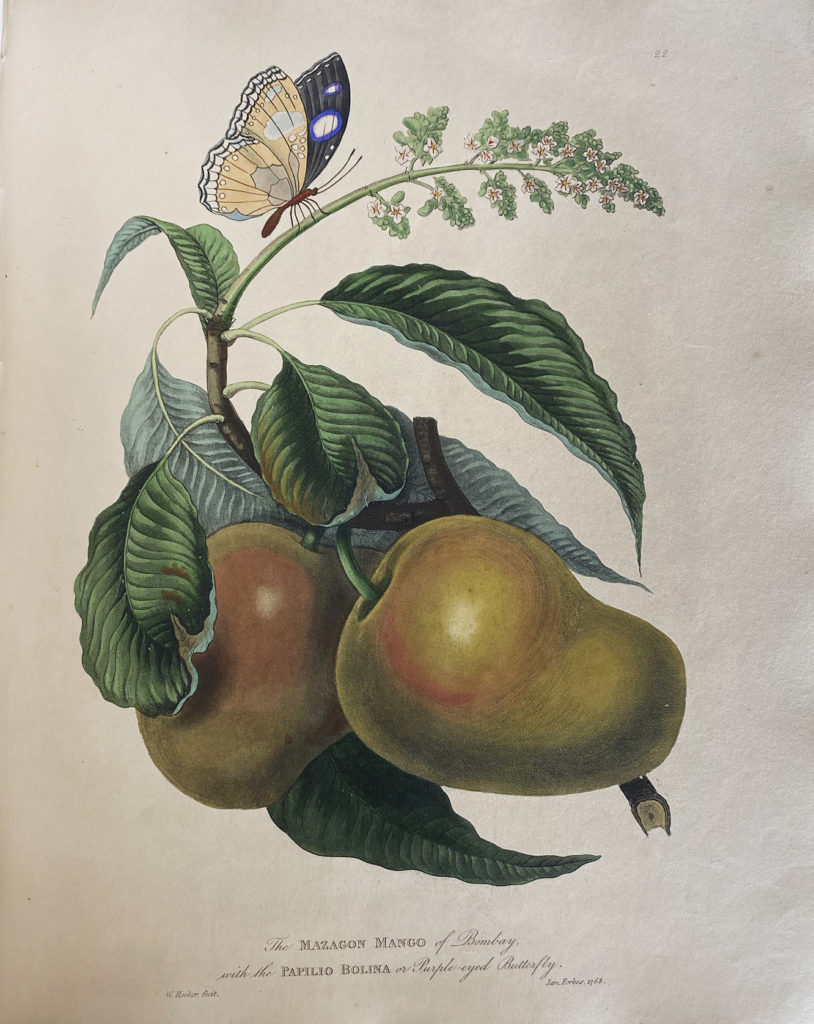
‘Mazagon Mango of Bombay and Papilio Bolina’ from ‘Oriental Memoirs’ by James Forbes
These included tailorbirds building a nest in the branches of morning glory; a bulbul on a twig bearing custard apple; the Mazgaon mango of Bombay with a purple-eyed butterfly; the palm, which “gives an oriental costume to the landscape;” and the red, blue, and white lotus, which “when gently agitated by the breeze, give a beauty and freshness not easily conceived by the inhabitants of a colder climate.”
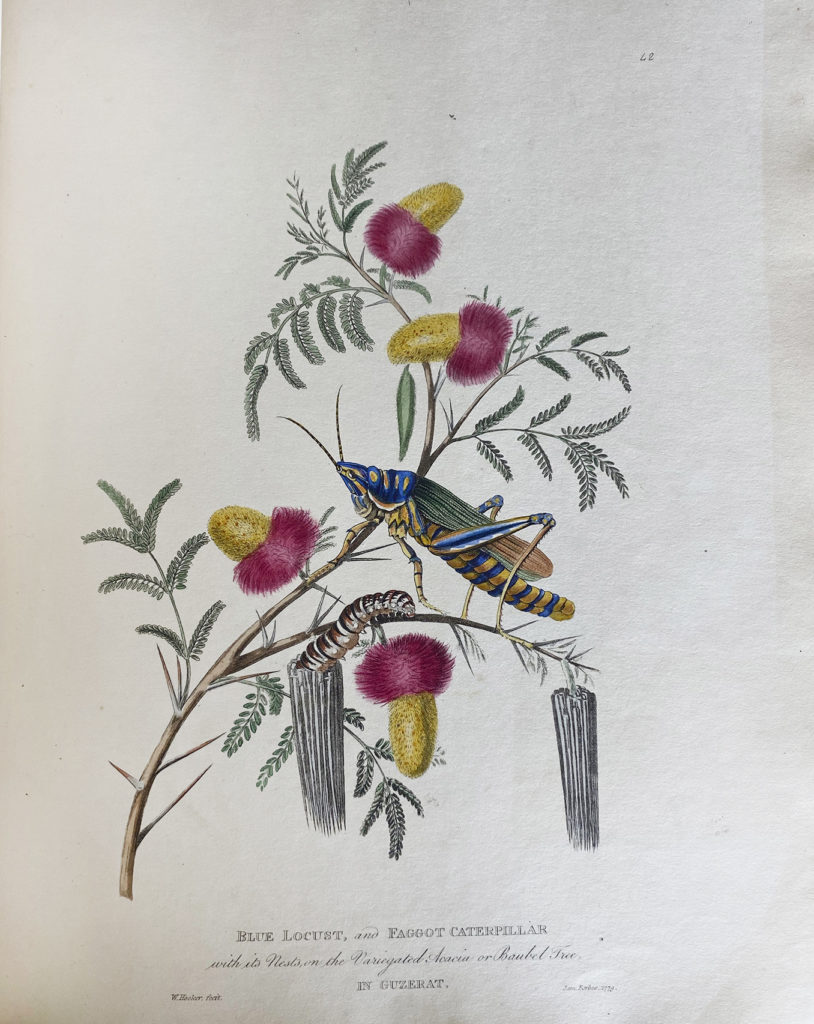
‘Blue Locust and Faggot Caterpillar in Guzerat’ from ‘Oriental Memoirs’ by James Forbes
Forbes had great empathy for the natural world, which showed in his pen and his brush. The banyan, to him, was “one of the most curious and beautiful of nature’s productions in that genial climate, where she sports with so much profusion and variety.” And, the silk-cotton tree, whose flower is followed by a pod, as “green at first, but ripening to dark brown, when it bursts open and covers the adjoining groves with snowy flakes, light as the floating gossamer.”
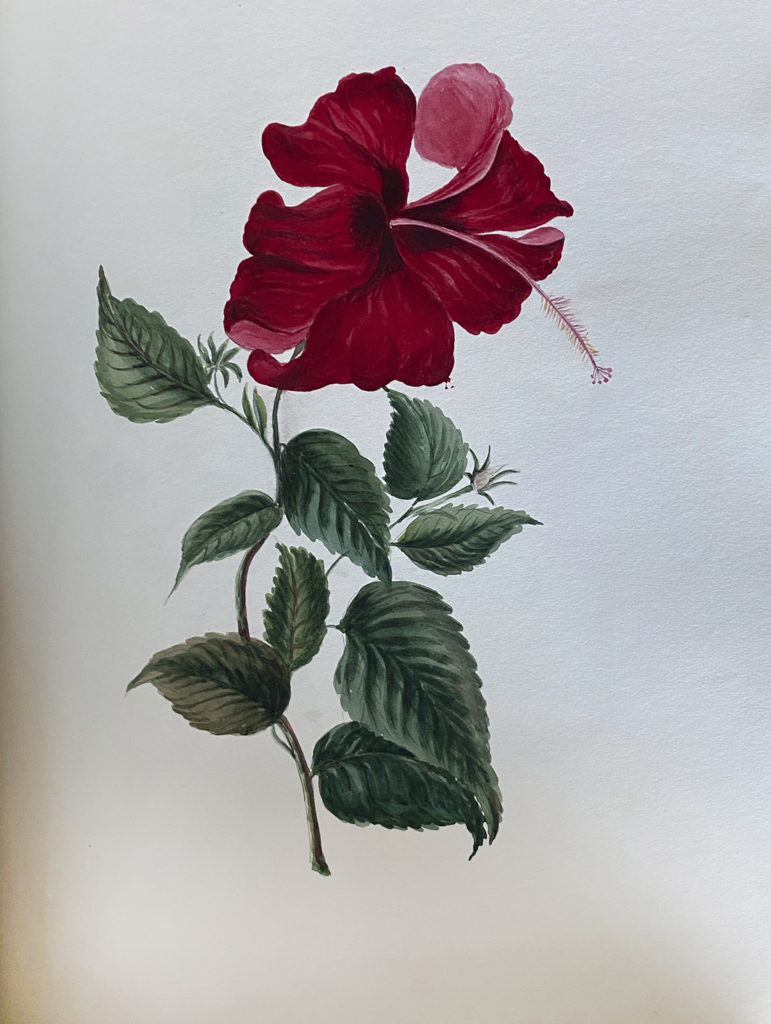
Hibiscus liliiflorus from the rare book ‘Flowers Of The Bombay Presidency’ by Mary E Butt and William Butt
With the advent of photography, botanical art did begin to wither. According to historian Deepak Kumar in The East India Company and the Natural World, “In 1855, the [British] Court sent a despatch asking to discontinue the employment of draughtsmen and artists, and to encourage accurate photographs of the most important commercial products.” Private projects were still around, such as the 200-drawing folio, Flowers of the Bombay Presidency (1857-64) by Mary E Butt, but it was created in the service of personal joy rather than science.
Thriving Patches of Green
On the scene today, botanical illustrator Nirupa Rao, the artist behind Pillars of Life: Magnificent Trees of the Western Ghats and Hidden Kingdom: Fantastical Plants of the Western Ghats, says, “I think the genre has been pretty dormant since Independence, probably also because of advances in photography. Thakur Ganga Singh continued to work at the Forest Research Institute and under the patronage of the Maharaja of Patiala up to his death in 1970, survived by his student, P Sharma. Nowadays, there is a growing number of freelance artists.”
As always, botanical art continues to be the pillar of support for naturalists. “Pillars of Life, for instance, was a documentation of native trees conceived of by two naturalists, Divya Mudappa and TR Shankar Raman, who run a rainforest restoration programme in the area,” says Rao. “The book was a response to their specific requirements of wanting to capture tall trees, up to 140 ft, that don’t fit into a single camera frame. Hidden Kingdom takes a more whimsical approach to botanical art. A lot of the illustrations are of habitats, which isn’t as common in colonial-era natural science illustration, which tended to favour a blank white backdrop.”
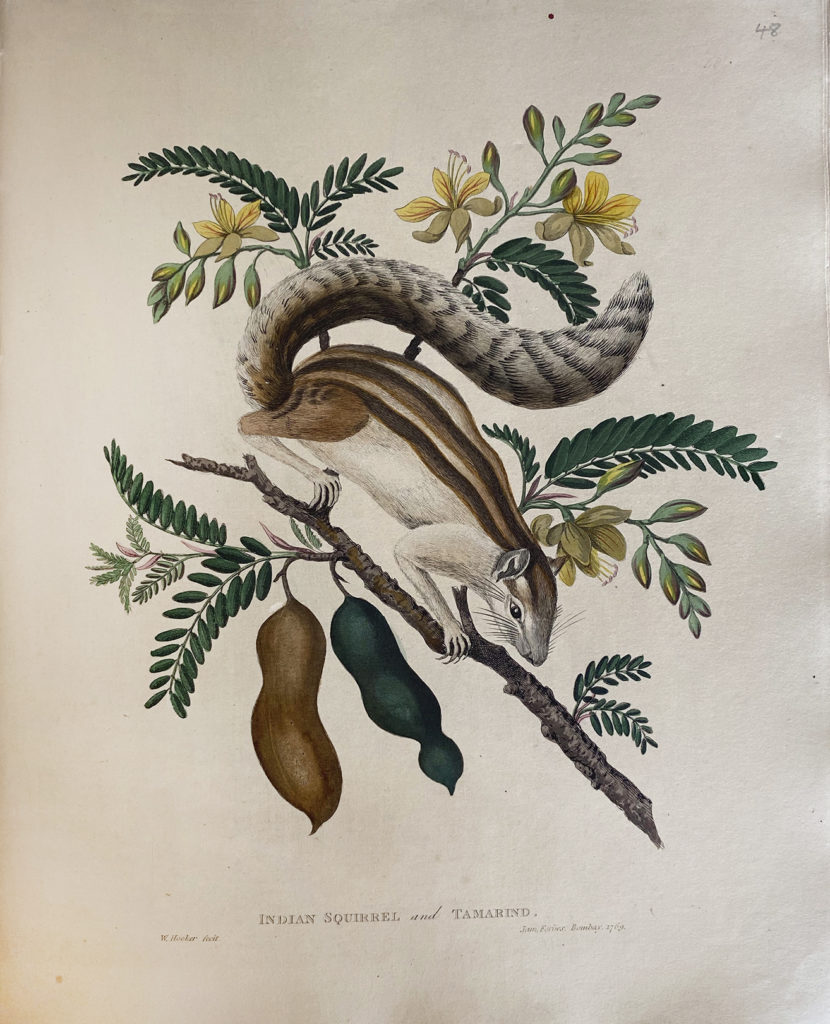
‘Indian Squirrel and Tamarind’ from ‘Oriental Memoirs’ by James Forbes
Over the centuries of botanical art in India, what comes across quite clearly is how Ayurveda, mythology, history and culinary practices were intertwined with Indians’ relationship with plants. Colonial descriptions mirrored that, with throwaway lines such as, “The leaves [of jasmine] are good for indolent ulcers,”1 or, the bael tree’s “trifoliate leaves resemble a trident, and the tree is sacred to the devotees of Shiva.”1 A personal favourite, which combined all of the above, is in the bio of imli: “The most famous tamarind tree is in Gwalior, over the tomb of Tansen. Even today its leaves are eaten by aspiring musicians to make their voices as sweet as his.”1
References from the Sarmaya Library and Rare Books
- From Fifty-One Flowers: Botanical Watercolours of Bengal (2006)
- From Oriental Memoirs (1834) by James Forbes
- From Henry Noltie’s essay, Moochies, Gudigars, and other Chitrakars, from The Weight of a Petal: Ars Botanica, Marg, Vol 70, No 2 (2018-19)



